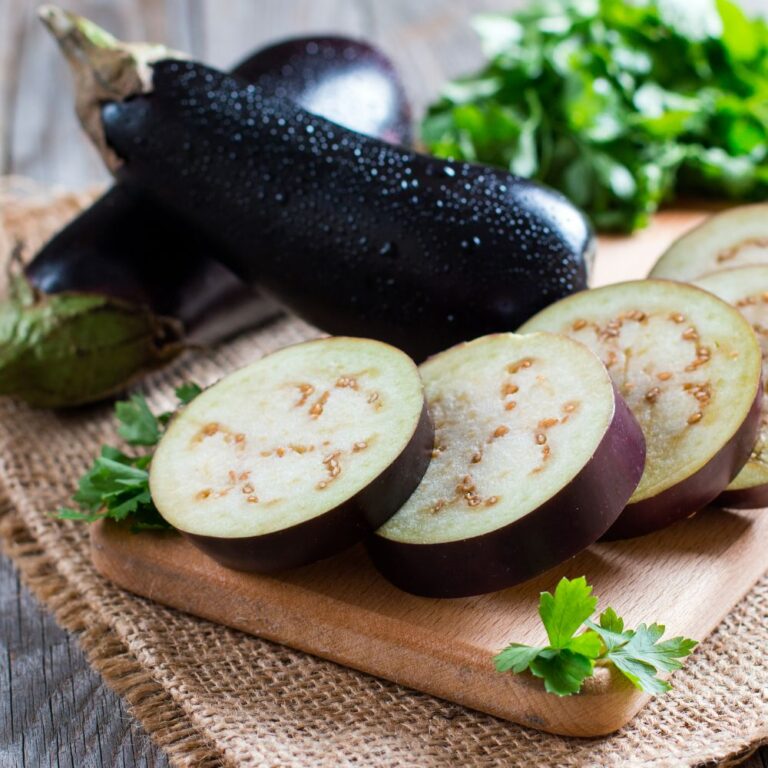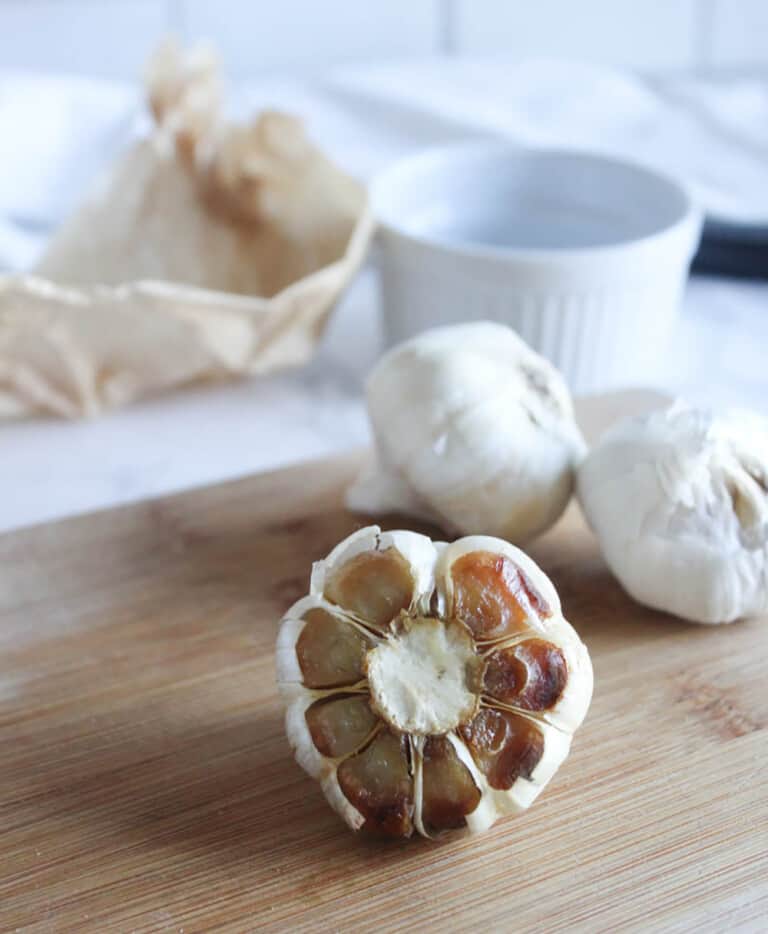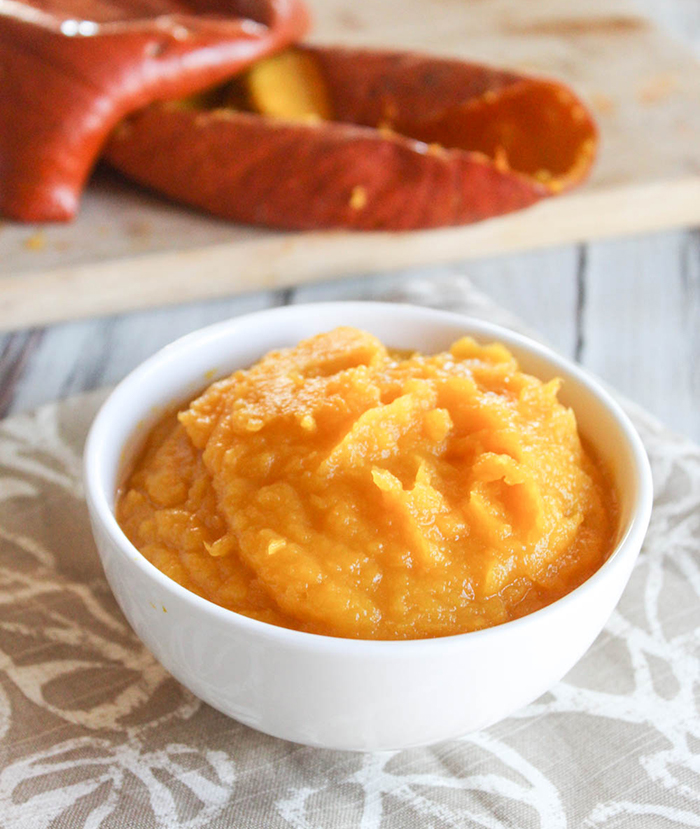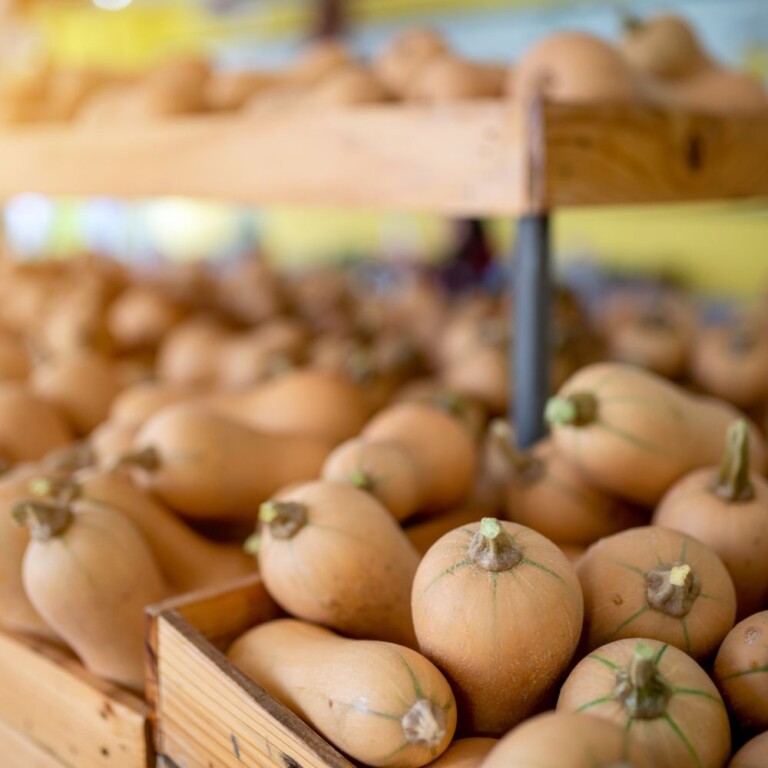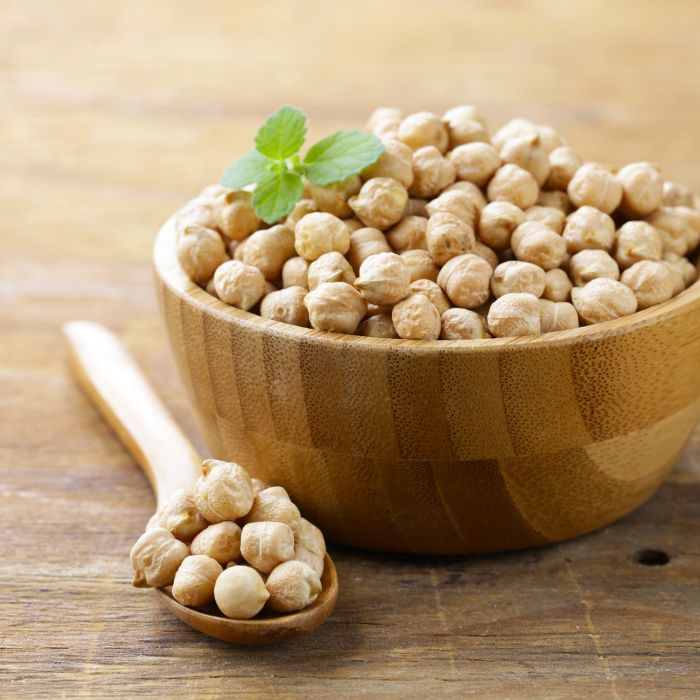What Does Cauliflower Taste Like? Plus Tasty Recipes
Cauliflower is a versatile vegetable that can be transformed into almost anything! I’m sure you know it’s healthy, but have you ever considered its flavor potential? When you think about what cauliflower tastes like, there are many answers depending on the variety and how it is prepared.
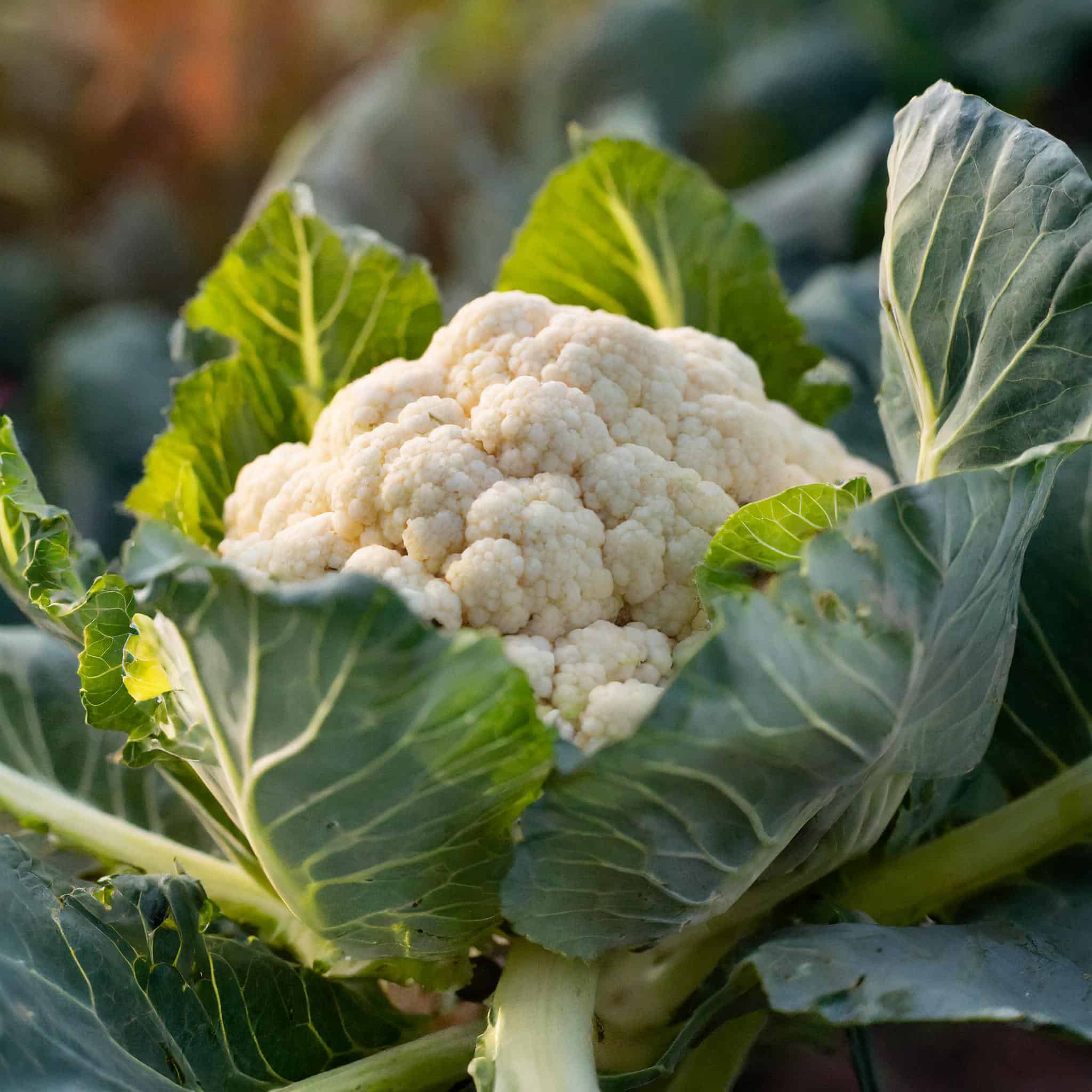
What does cauliflower taste like?
Cauliflower is a healthy vegetable that belongs to the cruciferous vegetables family. It has a tightly packed head that is composed of undeveloped flower buds, also called curd. Cauliflower comes in several different colors, such as pure white (which is the most common), purple, green, and orange, each with its own distinct flavor.
Generally speaking, cauliflower has a mild nutty flavor. The taste of cauliflower can also be described as earthy and slightly sweet, yet it can sometimes have a slightly bitter aftertaste. The flavor of cauliflower can vary depending on the type of cauliflower and how it is prepared. Overall, cauliflower is neutral in taste and versatile! It’s an excellent addition to a wide variety of dishes.

Cauliflower Varieties
There are several varieties of cauliflower all varying in color and flavor. Here is a breakdown of the different types of cauliflower and their unique flavors.
White Cauliflower – This is the most common variety that you will find in the stores and farmer’s markets. It has a white head with a clean, mild taste that is often described as sweet and nutty. It is a perfect canvas for spices and seasonings and cauliflower rice.
Green Cauliflower – Also known as broccoflower, is a hybrid of broccoli and cauliflower. It is slightly sweeter and more pronounced flavor compared to white cauliflower. It’s perfect for roasting and eating raw.
Purple Cauliflower – With its vibrant hue, purple cauliflower is more tender than white cauliflower and is slightly sweeter with a earthy and nutty taste. When purple cauliflower is grilled or roasted, the flavor becomes more pronounced.
Orange Cauliflower – This variety is sometimes called cheddar cauliflower from its color. It has a higher content of vitamin A and is slightly sweeter and creamier than white cauliflower, making it an excellent addition to soups and sauces.
Romanesco Cauliflower –This cauliflower has a distinct flavor that is more intense and nuttier than traditional cauliflower, that almost tastes like broccoli. It has a firm texture that holds up well to many cooking methods and is well suited for roasting.

How to prepare cauliflower
Cauliflower can be prepared in many different ways. It can be roasted grilled, steamed, used in curries, soups, served as cauliflower steak, rice, purees and even pizza crust! The flavor and texture of cauliflower can change with each way that it is prepared. Here are some popular ways to enjoy cauliflower.
Raw cauliflower flavor and texture – earthy, mild, and crisp
Raw cauliflower has a flavor that is quite similar to raw cabbage or broccoli, but it is a little milder. When you take a bite of it, you’ll notice an initial freshness and the texture is crisp and satisfyingly crunchy. You can use raw cauliflower in salads or as part of a vegetable platter with a side of hummus or dip.
Raw cauliflower can also be chopped finely to create a texture similar to rice and added as a grain substitute to grain-free dishes. Its neutral flavor makes it a great complement to tangy and savory vinaigrettes and dressings.
How to prepare raw cauliflower: Rinse a head of cauliflower under cold water to remove any dirt. Place the cauliflower head on a cutting board and carefully cut it into florets or small pieces using a sharp knife.
Enjoy raw cauliflower plain, with hummus, ranch dressing or tzatziki. It also tastes great in salads.
Steamed cauliflower flavor and texture- subtle and soft
Steaming cauliflower can bring out its subtle flavor. This gentle cooking method transforms the sturdy florets into more tender, soft bites with a touch of natural, earthy flavor. Steaming does not overpower the cauliflower’s flavor but enhances its mild, slightly nutty undertones.
Steamed cauliflower is a soft canvas ready to soak up the flavors of seasonings or sauces. The key is to steam the cauliflower until it’s just tender enough to pierce with a fork, so it’s not too crisp or overly mushy. It’s a delicate balance that brings out the best in steamed cauliflower.
Serve steamed cauliflower with a little drizzle of olive oil or melted butter with a splash of lemon juice.
How to steam cauliflower: Rinse a head of cauliflower under cold water and pat it dry. Cut the head of cauliflower into florets using a sharp knife. Try to make the florets as uniform in size as possible for even cooking.
Fill a saucepan or pot with a few inches of water, and add a steamer basket to the pot, making sure the water doesn’t touch the basket. Place the pot with the steamer basket on the stove over medium-high heat, once the water boils carefully add the cauliflower to the steamer basket in a single layer. Cover the pot and steam for approximately 5 to 7 minutes.

Roasted cauliflower flavor and texture – nutty, caramelized and firm
Roasting or grilling cauliflower enhances its mild taste by transforming it into a rich combination of flavors. The oven or grill’s high heat caramelizes the natural sugars in the cauliflower florets, resulting in a tempting nuttiness. Roasting or grilling brings out a complexity that cannot be found in cauliflower’s raw form.
Toss the florets with a bit of olive oil, salt, and pepper before roasting, as it helps to enhance the caramelization process. Roasted cauliflower can be served as a wholesome side dish or as a flavorful addition to salads and grain bowls, proving its subtle beginnings can lead to a remarkably versatile and bold end. I like roasted cauliflower plain and simple, seasoned with salt, pepper, and olive oil. You can also add fresh herbs, or garlic for extra flavor.
How to roast cauliflower: Preheat the oven to 425 degrees f. Prepare the cauliflower by rinsing it and patting it dry. Cut it into florets that are similar in size. Place the florets into a mixing bowl with olive oil until evenly coated. Season with sea salt and pepper.
Arrange the florets on a parchment-lined baking sheet in a single layer; make sure they are not overcrowded to allow for proper airflow. Place the baking sheet into a preheated oven and bake for 20 to 25 minutes, stirring halfway through the cooking time.
To grill cauliflower, follow the instructions above, except place the cauliflower on a grill pan and cook on the grill.

Sauteed cauliflower – nutty, sweet and slightly crisp
When cauliflower is sauteed, it tastes similar to roasted cauliflower but has a crisper texture that is nutty and mildly sweet. The natural sugars in sauteed cauliflower caramelize and create a delicious overall flavor. I like to saute cauliflower with a little bit of oil, salt and pepper.
How to saute cauliflower: Rinse, dry and cut the cauliflower into bite sized pieces. Place a large, heavy skillet on the stove over medium heat and add olive oil. Once the oil is hot, add the cauliflower in a single layer. Be careful not to overcrowd the skillet. Let the cauliflower cook undisturbed for 3 to 4 minutes to allow it to develop a golden-brown crust. Use a spatula or tongs to toss the cauliflower gently and continue to saute for an additional 5 – 7 minutes until it is tender and crisp and lightly browned on all sides.
Is cauliflower healthy?
Cauliflower is packed with vitamins, minerals and fiber. It has been praised for promoting healthy digestion and reducing inflammation. You can read more about the health benefits of cauliflower on Healthline.

When is cauliflower in season?
Even though it is available year-round, cauliflower is in peak season from September through November. During these months you can find fresh and flavorful cauliflower at your local farmer’s market, or the produce section of your grocery store.
Tips for selecting and storing cauliflower
When purchasing fresh cauliflower, it is important to choose heads with a consistent, creamy white color and tightly packed florets. The green leaves surrounding the bottom should be crisp, as this indicates the cauliflower’s freshness. It is best to avoid heads that have dark spots or loose sections, as these are signs of deterioration.
Once selected, proper storage is key for maintaining cauliflower’s flavor. It’s best to leave it unwashed until it’s ready to use, which prevents it from becoming limp or moldy. It usually comes from the grocery store wrapped in plastic. Try to loosen the plastic a little bit so that the moisture isn’t trapped in it, which can cause it to deteriorate faster. Store cauliflower in your crisper drawer, where it should last for about a week. Before preparing, be sure to rinse thoroughly in water.
You can also purchase cauliflower pre-cut into florets instead of buying a whole head of cauliflower, which can be a time saver. However, pre-cut cauliflower will not last as long in the refrigerator as the whole head.
Foods that pair well with cauliflower
- Vegetables: Bell peppers, broccoli, greens, potatoes, brussels sprouts, tomatoes, watercress
- Bread crumbs
- Dairy: Butter, cream, milk, yogurt, sour cream
- Cheese: Blue, cheddar, goat, parmesan
- Briny foods: Capers, black olives, green olives
- Herbs & Spices: Cardamom, celery seeds, chervil, chives, cilantro, dill, chili powder, cumin, curry powder, garam masala, ginger, mint, nutmeg, paprika, parsley, saffron, thyme, tarragon.
- Alliums: Garlic, onions, leeks, shallots, scallions
- Citrus
- Seafood
- Olive oil
- Mustard
- Soy sauce
- Vinegar
- Cuisines – Mediterranean, East Mediterranean, Indian
Try these flavor combinations with cauliflower
Roasted Cauliflower + Bread crumbs + Garlic +Olive Oil + Parmesan Cheese
Steamed Cauliflower + Mint + Garlic + Oil + Pasta
Sauteed Cauliflower + Oil + Black Olives + Capers
Raw Cauliflower + Greek Yogurt + Garlic + Fresh Dill + Chives

Favorite cauliflower recipes
- Easy 3-Ingredient Cauliflower Soup – Velvety, delicious and perfect for every cauliflower lover.
- Creamy One Pot Cauliflower Mac and Cheese – Cauliflower takes the place of pasta in this low carb version of mac and cheese.
- Spicy Cauliflower and Black Beans Tacos – Packed with flavor, and you won’t miss the meat in these tacos.
- Easy Mediterranean cauliflower rice bowl – A delicious healthy light meal packed with flavor.
- Sauteed Cauliflower – A unique combination of ingredients that is the perfect side for any meal.
- Air Fryer Broccoli and Cauliflower – Another simple side dish that everyone will love.
- Air Fryer Buffalo Cauliflower Bites – Bites of cauliflower are air-fried in a batter and covered in spicy buffalo sauce.
- Crispy Air Fryer Breaded Cauliflower – A simple and delicious recipe that is perfect for snacking on or as a side dish.
- Cauliflower Au Gratin– An easy-to-make casserole made with tender cauliflower baked in a creamy, cheesy sauce.
- Pea Salad with Cauliflower – A unique salad made with crispy celery, onion and cauliflower in a sweet and creamy dressing.
- Cauliflower Pizza Crust – A simple gluten-free and low-carb pizza crust!
- Middle Eastern Whole Roasted Cauliflower – A beautiful and delicious side dish or entree made with simple ingredients.


